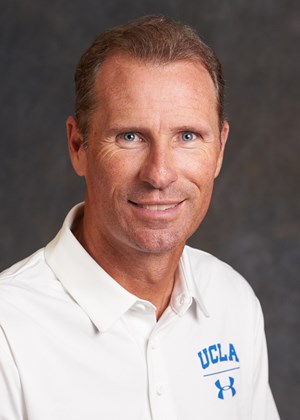The 2019 season was clearly a down year for UCLA but it is premature to draw any conclusion from that other than the fact that there is no quick fix when it comes to returning the program to national prominence. More likely than not righting the ship at Westwood will be a multi-year project.
UCLA entered the 2019 season with a tradition rich history that included double digit wins in every season but two since 1960 (2007 and 2017). The 2019 season became the third. The Bruins were 6-9-0 with a 2-6-2 mark in Pac-12 play despite the fact that they began the season with a promising 3-2-0 record that included a win over defending national champion Maryland.
It was not the season that the Bruin faithful hoped for under new head coach Ryan Jordan. You have to go back to 1955 when UCLA was 5-3-0 to find a season in which UCLA had six or fewer wins.

What constitutes a down year for a program varies based on the level of success the program has had in the past. At UCLA the norm has been a berth in the NCAA Tournament with a down year being a season in which the Bruins earned an at-large berth but were eliminated in the first round of play. The Bruins were not even close to earning a berth in the NCAA Tourney in 2019.
In reality, the potential exists for all programs to have a down year but a down year only becomes problematic when it morphs into a multi-year downward trend. Injuries, cumulative misses on the recruiting trail, or a large number of departures due to players leaving early in addition to losses due to graduation can contribute to a down year. It is also not unusual for a coaching change, as was the case at UCLA in 2019 when Jordan took over the reins of the program from Jorge Salcedo, to result in a transition that creates growing pains.
Indiana, Maryland, North Carolina, and Clemson are among the tradition rich programs that for various reasons have experienced a down year of sorts in the past based on their own standards and quickly rebounded. The parity from top to bottom that now exists in most conferences results in a very small margin for error. Akron, Michigan State and Denver are among the programs who experienced an unexpected down year in 2019 and will seek to rebound in the Spring of 2021.
UCLA has earned a berth in the NCAA Tournament a total of 44 times including 14 of the 15 seasons that Salcedo was the head coach. During Salcedo’s tenure the Bruins were 182-89-42, they won the Pac-12 title four times, and advanced to the College Cup three times (2006, 2011, 2014).
The last time the Bruins won a national championship was back in 2002 under the guidance of Tom Fitzgerald.
Any meaningful analysis of the current status of the program at UCLA and prognosis for the future warrants a deeper dive into the history of the program.
From 2015 through 2018 the Bruins were 38-36-7. Jordan inherited a program at UCLA that by its own standards was in the mist of a downward trend. The immediate challenge heading into the 2019 season was the fact that the program was without seven of its top goal scorers from the 2018 team and two very solid defenders. Due to injury, the Bruins were also without the services of defender AJ Vasquez who was a starter in 2018 and newcomer midfielder Jose Sosa who transferred in from the University of Pacific.
The broader and perhaps longer-term issue facing Jordan was that although UCLA has a proud tradition with a lot of success over the years, the program was the equivalent of a ship that had been taking on water for several seasons and was no longer the force on the national scene, the flagship program of the west coast, and the competitor within the Pac-12 that it had once been. The 2012 season was the last time that the Bruins won the Pac-12 title. During the past seven years, Stanford has won the Pac-12 title five times and Washington two times.
In retrospect, the cracks in the foundation at UCLA began to appear back in 2015 following a banner 2014 season during which the Bruins led by Hermann Trophy winner Leo Stolz were 14-5-5 and advanced to the College Cup. UCLA played well enough to earn an at-large berth to the NCAA Tournament in 2015 with an 11-9-1 record and in 2016 with a 10-8-2 record but neither season was vintage UCLA soccer.
In 2017 the Bruins were faced with the challenge of filling the gap that existed due to a large number of early departures to enter the professional ranks. While UCLA brought on board good recruiting classes in 2016 and 2017, a case could be made that from top to bottom they were not as highly regarded as their classes had been in the past. The departures and the inability of the newcomers to fill the gaps that existed produced a 7-10-1 overall record and 4-6-0 mark in Pac-12 play in 2017.
The 2017 season was first time since 1952 when the Bruins were 1-2-0 overall that the program had fewer wins than losses. UCLA’s streak of 34 consecutive berths in the NCAA Tournament came to an abrupt halt in 2017.
In 2018, Salcedo’s last year at the helm of the program, the Bruins rebounded somewhat with a 10-9-0 record that enabled them to secure an-large berth and return to the NCAA Tournament field. UCLA’s season subsequently ended when they were defeated by Portland 1-0 in the first round of the tourney.
In 2019 under Jordan the Bruins were inconsistent and never really seemed to sort out a team identity. UCLA played well at times but also struggled to finish the scoring opportunities that came their way in the final third and experienced costly lapses in play on the defensive side of the ball. They never seemed to settle into a comfortable balance that would enable them to apply pressure on the offensive side of the ball without leaving themselves vulnerable on the defensive side of the ball.
The productivity of forward Milan Iloski on the offensive side of the ball was the highlight of the 2019 season. Iloski’s seventeen goals was the most scored in a single season at UCLA since Chandler Hoffman found the back of the net eighteen times back in 2011. Iloski elected to forgo his senior season to enter the professional ranks signing a homegrown contract with Real Salt Lake. No other Bruin scored more than two goals last year.
Filling the void that Iloski’s departure creates in the Bruin attack is going to be tough. More likely than not when UCLA resumes play they will attempt to fill the gap with offense by committee. The Bruins will also be without the services of defender and team captain Matthew Powell who was a four-year starter and 2019 All-Pac-12 Second Team selectin, forward Blayne Martinez (0g, 1a) and midfielder Alexis Triadis (2g, 1a) due to graduation.
There are a lot of unanswered questions in Westwood so it will be interesting as well as revealing to see how the Bruins perform when they do resume play. The good news is that a solid core of players return from the 2019 team with the benefit of a year under Jordan’s system and style of play under their belts.
It is also a plus that UCLA added a promising eleven member 2020 recruiting class that includes several players who should contribute immediately. Transfer Kevin Diaz who scored a total of 39 goals and had 29 assists during two seasons at Cerritos College has the potential to add heft to the Bruin attack. Defender Ahmed Longmire who transfers in from Utah Valley University where he was a starter in 2018 and 2019 and a First Team All-WAC selection is among members of the class who should strengthen the defense.
Justin Garces, the starting goalkeeper for the past two seasons, returns to give the Bruins an experienced presence in goal. Senior defenders Ben Reveno who transferred in last year from UC Irvine and Ruben Soria who transferred in last year from Santa Monica College, redshirt junior Erik Baekkelund and sophomore Constantinos Michaelides (1g, 1a) are slated to return in the back with the advantage of a year of experience playing together now under their belts. The healthy return of defender AJ Vasquez is also a big plus.
In 2019 a porous Bruin defense allowed opponents to score a total of 38 times. You have to look long and hard to find a year, if any exists, in which UCLA allowed that many goals. This is clearly an area where improvement is needed.
Senior Eric Iloski (2g, 4a) and junior Riley Ferch (1g, 9a) who were 2019 All-Pac-12 Second Team selections, junior Cody Sundquist (2g, 4a), senior Marcony Pimentel (2g, 3a) who transferred in last year from Pittsburgh and senior Andrew Paoli (0g, 2a) return to provide a solid contingent of experienced midfielders upon which to build.
Expectations at UCLA will and should remain high. You can’t talk about the Bruins without mentioning the tradition of the program. UCLA remains one of the most decorated programs in college soccer. It is tempting to say that the Bruins will be drastically improved now that they have a year under Jordan but that is probably a stretch. It is more realistic at this point to say that the Bruins will be more competitive than they were in 2019 and leave it at that.
While a quick rebuild is possible, it is more likely that UCLA will remain in the chase group behind Pac-12 frontrunners Stanford and Washington (and perhaps even Oregon State and California) for awhile. The bottom line is that the margin for error for UCLA in Pac-12 play will likely remain small whenever conference play resumes.

Jordan turned the program around at Cal Baptist University and successfully restarted a dormant program at Pacific but in both cases it took a couple of years for everything to fall into place. The situation at UCLA is a little more complex and ambitious. While there is reason for cautious optimism, what the trend and time line will be at UCLA under Jordan remains to be seen.
One of the essentials in regard to getting any program back on track is bringing on board players who are talented but also team oriented. Jordan has a track record of doing that which is another plus.
One of the biggest challenges that UCLA has had to face in the past and will continue to face is merging the individual talents of a lot of high-profile players into a unified team and dealing with the gaps that often exist due to the early departure of players to enter the professional ranks. While those are nice problems to have they can create havoc in terms of team chemistry and make succession planning very difficult.
The bottom line is that upward movement in the Pac-12 and the return to a double-digit win season is not going to occur at UCLA without a lot of hard work and significant improvement on both sides of the ball.





